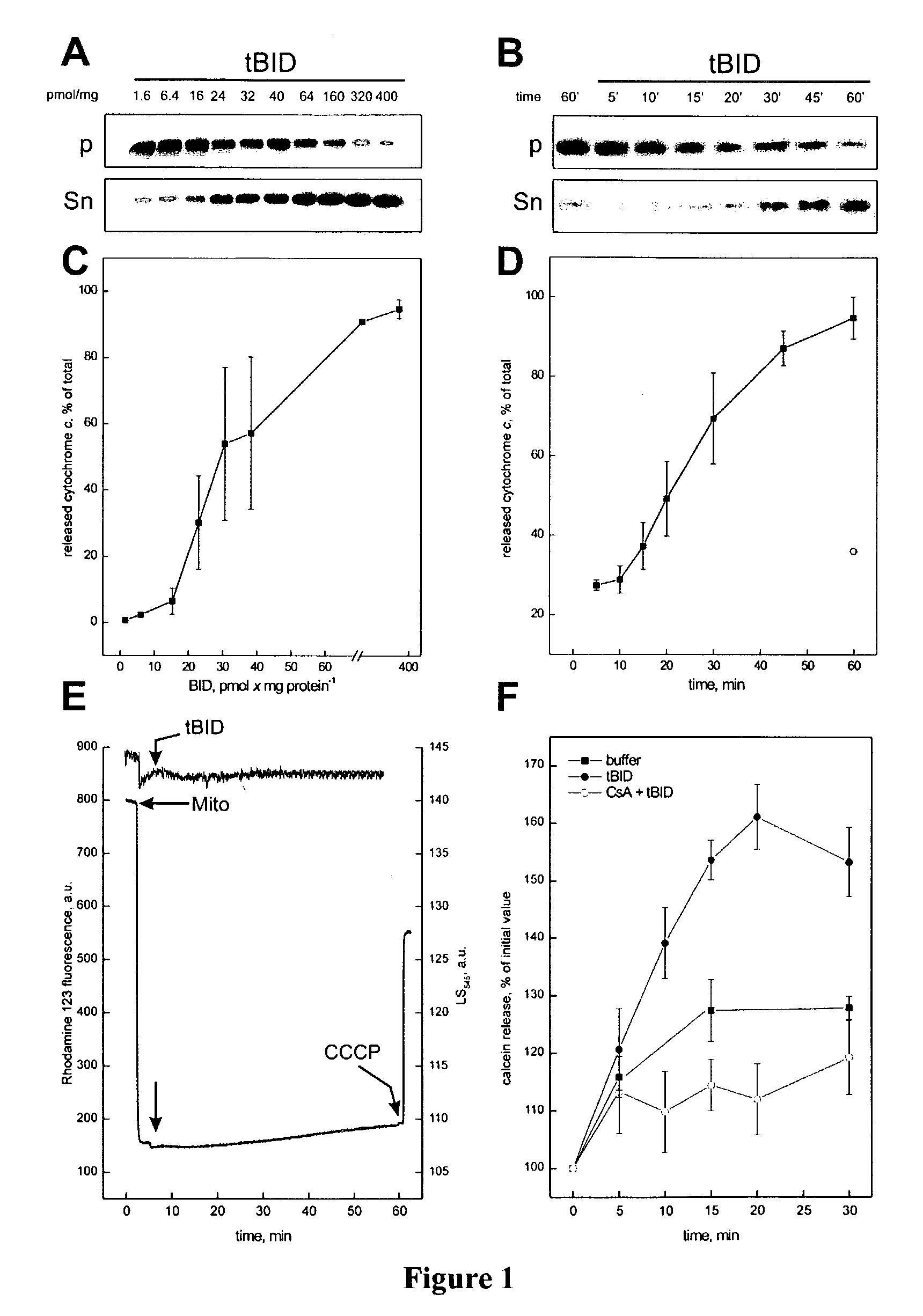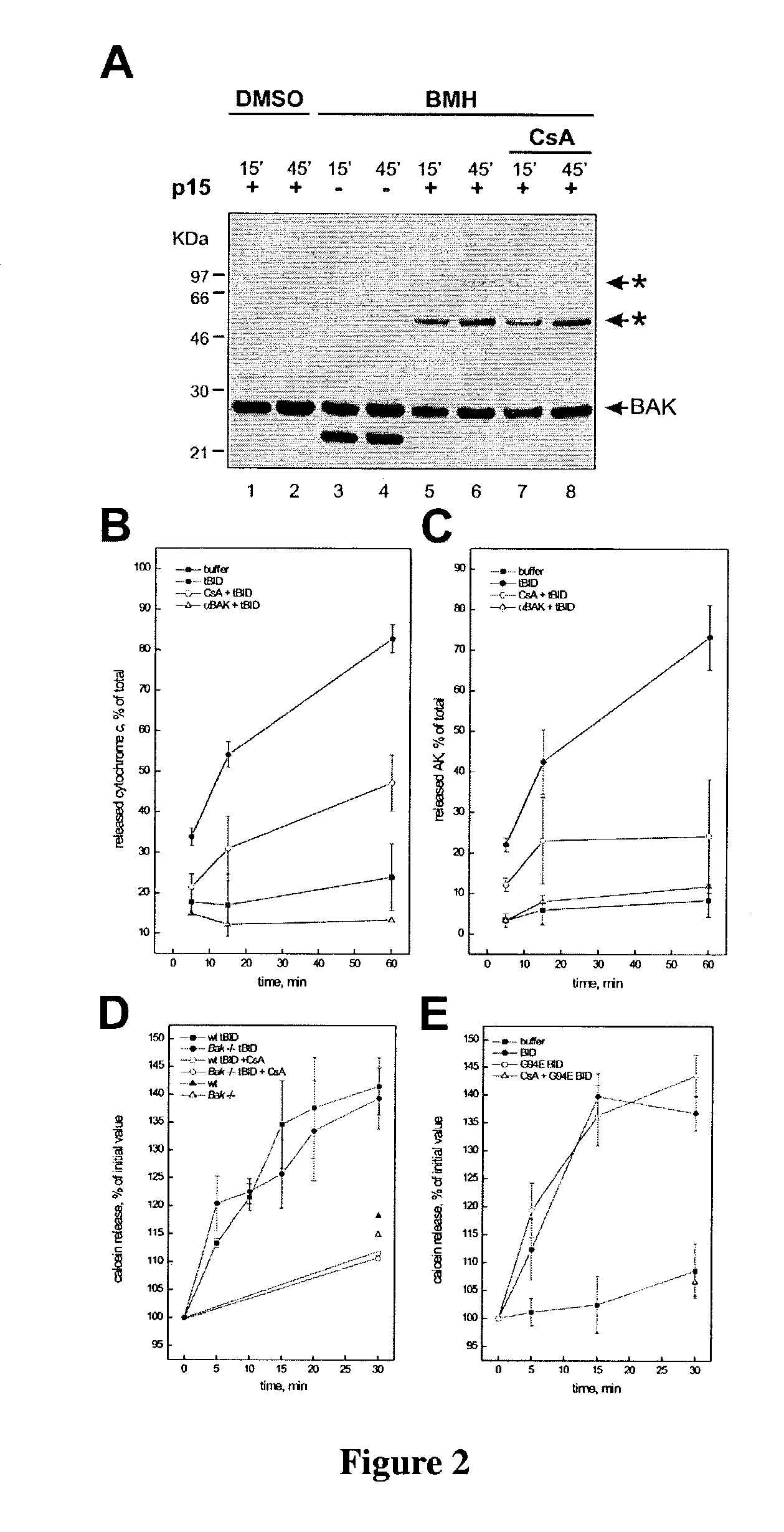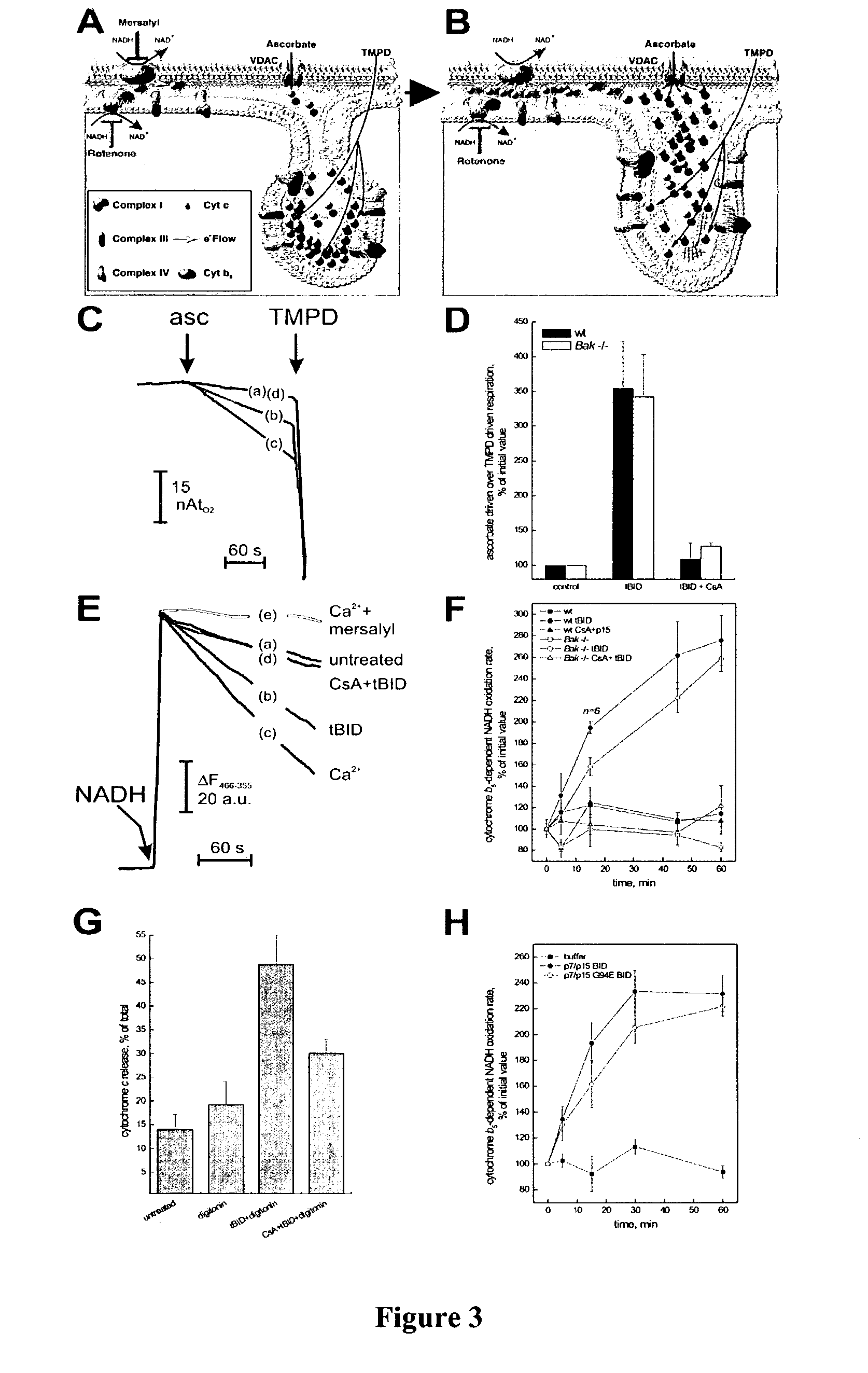BID polypeptides and methods of inducing apoptosis
a polypeptide and apoptosis technology, applied in the field of apoptosis regulation, can solve problems such as defects in cell death regulation, and achieve the effect of reducing the triggering of cytochrome c releas
- Summary
- Abstract
- Description
- Claims
- Application Information
AI Technical Summary
Benefits of technology
Problems solved by technology
Method used
Image
Examples
example 1
Determination of the Effect of tBID on Cytochrome c Release
[0187]Mitochondria were isolated from liver of Balb / cJ mice by standard differential centrifugation, and resuspended in isolation buffer (IB) (0.2 M sucrose, 10 mM Tris-MOPS pH 7.4, 0.1 mM EGTA-Tris, 0.1% delipidated BSA).
[0188]To determine the kinetics and extent of tBID induced release of cytochrome c release, mitochondria (0.5 mg / ml) were incubated in experimental buffer (EB) (125 mM KCl, 10 mM Tris-MOPS pH 7.4, 1 mM Pi, 5 mM glutamate, 2.5 mM malate, 10 μM EGTA-Tris, pH 7.4) and treated as described at 25° C. At the indicated time, mitochondria were pelleted by centrifugation at 12000×g at 4° C. for 3 min, and resuspended in the same volume of EB. Cytochrome c release was determined either by densitometry (Stratagene Eagle Eye II, BioRad) of immunoblots, or by rat / mouse specific ELISA performed on mitochondrial pellet and supernatant diluted 1:20 in PBS containing 0.5% Triton X-100 (R&D systems, MN). Cytochrome c is repo...
example 2
Determination of the Effects of CsA on Cytochrome c and Adenylate Kinase Release
[0198]FIG. 2 shows the regulation of tBID induced release of cytochrome c and adenylate kinases versus release of calcein. Panel 2A shows tBID induction of CsA-insensitive BAK oligomerization. 0.5 mg / ml mitochondria were incubated with tBID (lanes 1-2 and 5-8). In lanes 7-8 mitochondria were pretreated with 800 pmol CsA×mg protein−1 for 3 mins. After the indicated time, DMSO (lanes 1-2) or 10 mM BMH (lanes 3-8) was added, and after another 30 min the crosslinking reaction was quenched (Wei et al., 2001). The mitochondria were subjected to SDS-PAGE and immunoblot with anti BAK antibody. Star, BAK multimers.
[0199]Panels 2B and 2 C show the quantification of the effects of CsA and of blocking anti-BAK antibodies on tBID induced cytochrome c and adenylate kinase (AK) release. In both panels, mitochondria were incubated for the indicated time in the absence (closed squares), or in the presence of tBID (closed...
example 3
Redistribution of Cytochrome c upon tBID Treatment
[0206]The amount of cytochrome c released at 15 mins in the presence of tBID plus CsA was ˜17% more than buffer alone (FIG. 2B), similar to the estimate (˜16%) of cytochrome c that is resident in the IMS. The precise mechanism whereby the stores of cytochrome c within the cristae (˜85%) are mobilized for release during apoptosis remained uncertain. Therefore, tBID was examined to determine whether induced redistribution of cytochrome c stores from the cristae to the IMS, where it would be available for release across the OM in a BAK-dependent fashion.
[0207]FIG. 3 shows the effects of BID on cytochrome c mobilization in wt and Bak − / − mitochondria. Panels 3A and 3B are a schematic of different intramitochondrial cytochrome c pools and their accessibility by cytochrome b5 or ascorbate. Symbols used are detailed in the legend. Panel 3 C shows representative traces of ascorbate driven respiration. 1 mg mitochondria were incubated with 20...
PUM
 Login to View More
Login to View More Abstract
Description
Claims
Application Information
 Login to View More
Login to View More - R&D
- Intellectual Property
- Life Sciences
- Materials
- Tech Scout
- Unparalleled Data Quality
- Higher Quality Content
- 60% Fewer Hallucinations
Browse by: Latest US Patents, China's latest patents, Technical Efficacy Thesaurus, Application Domain, Technology Topic, Popular Technical Reports.
© 2025 PatSnap. All rights reserved.Legal|Privacy policy|Modern Slavery Act Transparency Statement|Sitemap|About US| Contact US: help@patsnap.com



